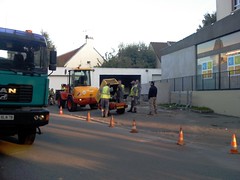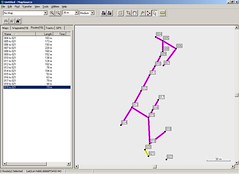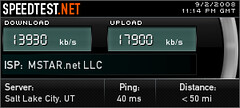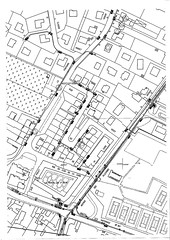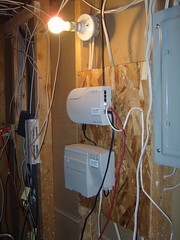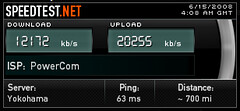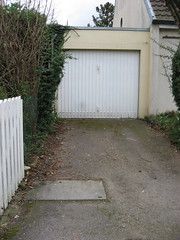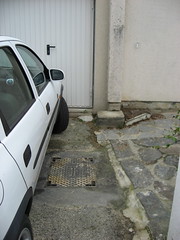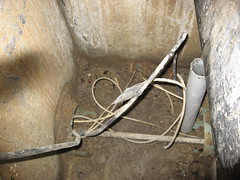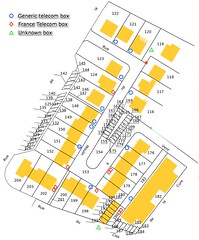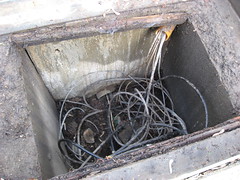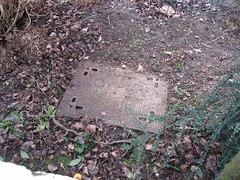I probably made a number of neighbors nervous yesterday walking around with my map and GPS in hand trying to locate hand holes in their property from the sidewalk. However, the exercise helped me decide on the area were I think it would be best to place the aggregation point. I found it at the bottom of the residence, right next to the small shops and across the street from the France Telecom trunk conduit.
 I initially looked for a place to install an ODF because it allows faster access to the connections and seems to be easier to add connections if we expand outside our residence. I was interested in an ODF from Pacific Interconnections, LLC in the US (see photo). However, I quickly realized I'd take a big risk putting an outdoor ODF in an area of the residence which has lots of delivery trucks.
I initially looked for a place to install an ODF because it allows faster access to the connections and seems to be easier to add connections if we expand outside our residence. I was interested in an ODF from Pacific Interconnections, LLC in the US (see photo). However, I quickly realized I'd take a big risk putting an outdoor ODF in an area of the residence which has lots of delivery trucks.
I'm probably more sensitive to trucks backing up in the residence because we came home from vacation this year and someone had backed into our car parked on the street. The paint from the vehicule that hit us was green and high up on the car - leaving the police to assume it was a rather large truck. The damage to our car was expensive to fix but nothing like trying to repair a damaged ODF. That's why I think it may be better to have a splice enclosure in a hand hole in the street.
As I mentioned in my last post, I think the best place would be next to hand hole 021 on my distance map. I took pictures of the spot this weekend (see below).
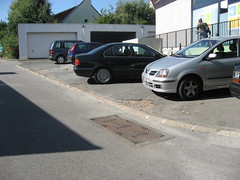 The road with the existing France Telecom boxes (shown to the left) belongs to the village, not our residence. That means it would be much more complicated to get permission to dig and install our own boxes. However, the land with the cars parked on it is part of the residence. This parking area is in fairly desperate need of a renovation and would be an excellent spot to pass off the residence connections into France Telecom's own conduit.
The road with the existing France Telecom boxes (shown to the left) belongs to the village, not our residence. That means it would be much more complicated to get permission to dig and install our own boxes. However, the land with the cars parked on it is part of the residence. This parking area is in fairly desperate need of a renovation and would be an excellent spot to pass off the residence connections into France Telecom's own conduit.

The nice thing about the hand hole in the two pictures is that it's one "hop" away from the main conduit which goes down 330 meters to the exchange. I would like to put our hand hole in front of the silver parked car in the picture.
The only catch is the parking spots are actually owned by individual tenants in the residence, not communally. That means I'd need to get permission of the owner to put in the box. I'm not quite sure how or if that would work.
The residence DOES own the road in front of the white garages (in the middle-left picture) if the parking spot doesn't work out. There are two FT hand holes there as well which could provide easy access. In that case I'd look at putting the hand hole next to waypoint number 020.
Finally, I inserted another waypoint out at the exchange to do the calculations for Part 2 of the project, going from the residence to the exchange (see below).


